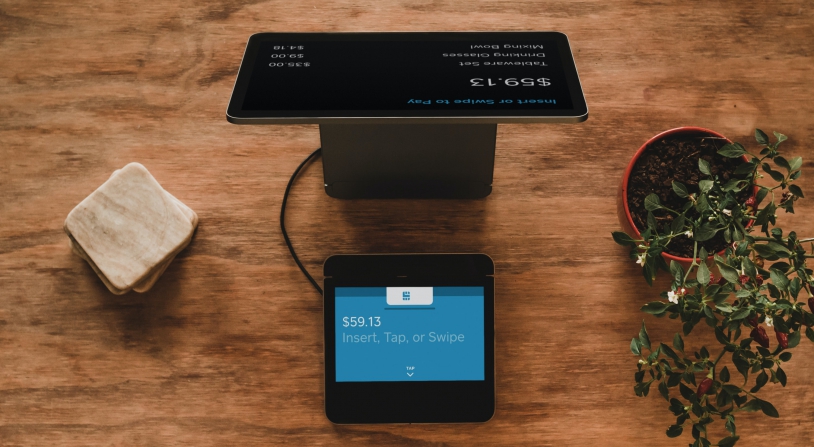Health apps sit on millions of phones, downloaded with good intentions but rarely opened after the first week. The problem isn’t a lack of information—patients know they should track their medications, monitor their blood pressure, or complete their physical therapy exercises. The problem is that traditional digital health tools treat behavior change as a simple information transfer, when in reality, sustained engagement requires tapping into deeper psychological drivers. Gamification offers a solution by transforming routine health tasks into experiences that trigger intrinsic motivation, provide immediate feedback, and create social accountability. The data backs this up: patients using gamified health apps show 15-20% improvement in health-related outcomes compared to standard methods, with retention rates up to 50% higher than non-gamified alternatives.
PR Overview
- Why Traditional Digital Health Tools Fail at Engagement
- The Mechanics That Drive Health Behavior Change
- Tailoring Gamification to Specific Health Conditions
- The Clinical Evidence Behind Gamified Interventions
- The Emerging Role of Esports and Gaming Culture in Health Awareness
- Measuring What Matters: Metrics for Gamified Health Apps
- The Future of Interactive Healthcare Experiences
- Building Better: Design Principles for Gamified Health Apps
- Practical Implementation for Healthcare Organizations
Why Traditional Digital Health Tools Fail at Engagement
Most health apps approach patient engagement with the assumption that awareness equals action. They provide reminders, display statistics, and offer educational content—all valuable components, but insufficient for driving long-term behavior change. The reality is that human motivation operates on multiple levels, requiring both immediate gratification and long-term meaning. A medication reminder notification might work for a few days, but without reinforcement mechanisms, it becomes background noise.
The gap between knowing what to do and actually doing it represents one of healthcare’s most expensive problems. Non-adherence to treatment plans costs the U.S. healthcare system billions annually, and traditional digital interventions have struggled to move the needle. Gamification addresses this by introducing elements that make the process of health management inherently rewarding rather than purely instrumental.
The Mechanics That Drive Health Behavior Change
Effective gamification in health apps operates through several interconnected mechanisms. Points and badges provide immediate positive reinforcement for completed tasks, creating micro-moments of achievement that build momentum. Progress tracking visualizes the journey, making abstract health goals tangible and measurable. Leaderboards and social features introduce healthy competition and community support, addressing the isolation many patients feel when managing chronic conditions.
What separates successful implementations from superficial “pointsification” is the integration of these elements with established behavioral science frameworks. The Octalysis framework, for example, identifies eight core drives that motivate human behavior: epic meaning and calling, development and accomplishment, empowerment of creativity and feedback, ownership and possession, social influence and relatedness, scarcity and impatience, unpredictability and curiosity, and loss and avoidance. A gamified mobile app for nurses that applied this framework demonstrated significant improvements in BMI classification after an 8-week intervention, with users specifically citing goal-setting, achievement rewards, and personalization as key motivators for continued use.
The most effective strategies blend immediate rewards with long-term progress indicators. A diabetes management app might award points for logging blood glucose readings (immediate gratification) while simultaneously displaying a monthly trend chart and unlocking educational content as the user demonstrates consistency (long-term development). This dual approach addresses both the need for quick wins and the desire for meaningful progress.
Tailoring Gamification to Specific Health Conditions
One size does not fit all when it comes to gamified health interventions. The game mechanics that motivate a teenager managing asthma differ substantially from those that engage an elderly patient recovering from cardiac surgery. A meta-analysis of gamification interventions in children and adolescents found a small but significant increase in moderate-to-vigorous physical activity, with interventions based on social cognitive theory and those using a combination of game elements showing stronger effects.
For chronic disease management, the focus should be on sustainable, long-term engagement rather than intense short-term bursts. Patients managing conditions like diabetes or hypertension need systems that accommodate the reality of living with illness for years or decades. Features like streak tracking, milestone celebrations, and community forums where patients share experiences can provide the social support and recognition that sustains motivation through difficult periods.
Mental health applications benefit from different mechanics. Here, the emphasis shifts toward self-reflection, mood tracking, and gentle encouragement rather than competitive elements that might increase anxiety. Gamification in this context often takes the form of journaling streaks, meditation challenges, and unlockable coping strategies that reward consistent engagement with mental wellness practices.
Rehabilitation and physical therapy apps can incorporate more active gaming elements, such as motion-controlled exercises that turn repetitive movements into interactive challenges. The key is matching the game mechanics to both the health condition and the patient population’s motivational profile.
The Clinical Evidence Behind Gamified Interventions
The question isn’t whether gamification can improve engagement—the data clearly shows it can—but rather which specific implementations produce measurable health outcomes. A gamified health app that increases user logins but doesn’t improve clinical markers has failed at its core mission. The most rigorous studies track both engagement metrics and health outcomes, using mixed-methods evaluations that combine quantitative data with qualitative user feedback.
In clinical trial settings, gamification elements such as rewards, milestones, and virtual simulations have been linked to higher participant retention and engagement. Electronic patient-reported outcomes combined with interactive tools boost compliance, suggesting that gamification can reduce dropout rates in research settings where sustained participation is critical for data quality.
The evidence base is growing but still maturing. A systematic review of Applied Game Design in health interventions found that while results are mixed, studies with robust designs show that gamification can support health behavior change when interventions are user-centered and interdisciplinary. The key word here is “interdisciplinary”—successful implementations typically involve collaboration between game designers, behavioral scientists, clinicians, and user experience researchers.
The Emerging Role of Esports and Gaming Culture in Health Awareness
The intersection of esports and digital health represents an underexplored frontier. While direct evidence of esports partnerships in health apps remains limited in academic literature, the potential is significant. Esports commands massive audiences, particularly among demographics that traditional health messaging struggles to reach. Young adults who might ignore a public health campaign will spend hours watching competitive gaming, creating opportunities for health awareness integration.
The gaming community’s existing comfort with achievement systems, progression mechanics, and social competition makes it a natural fit for gamified health interventions. Virtual patient interactions and avatars—elements already emerging in clinical research—share design DNA with gaming culture and could be adapted for health awareness campaigns that feel native to gaming platforms rather than intrusive.
Social reinforcement through leaderboards and communities has proven effective in health apps. Esports collaborations could extend this by creating competitive, community-driven health challenges that leverage existing gaming infrastructure and social networks. Imagine a scenario where professional esports organizations sponsor health challenges for their fan communities, with players competing not just in games but in step counts, hydration goals, or mental wellness check-ins.
Measuring What Matters: Metrics for Gamified Health Apps
Vanity metrics like total downloads or daily active users tell an incomplete story. Healthcare providers and app developers need to track metrics that connect to actual health outcomes. This includes adherence rates (are users completing prescribed actions?), clinical markers (are health indicators improving?), and sustained engagement (are users still active after 30, 60, 90 days?).
Mixed-methods evaluations provide the richest insights. Quantitative data reveals what is happening, while qualitative feedback explains why. In the nurse health app study mentioned earlier, interviews revealed which game elements users valued most, guiding iterative improvements that wouldn’t have been obvious from usage data alone. Users might complete a task because it’s required, but understanding whether they found it motivating or merely tolerable determines whether the gamification is truly working.
Subgroup analyses can identify which game elements and theoretical frameworks yield the best results for specific populations. An intervention that works well for adolescents might fall flat with older adults, and vice versa. Developers should plan for segmentation from the start, building in the ability to A/B test different gamification approaches and personalize the experience based on user preferences and engagement patterns.
Privacy and data security cannot be afterthoughts in gamified health tools. The same data collection that enables personalization and progress tracking also creates significant privacy obligations, especially when dealing with sensitive health information. Building compliance into the architecture from day one protects both users and developers.
The Future of Interactive Healthcare Experiences
The next generation of gamified health interventions will likely incorporate immersive technologies like virtual and augmented reality. VR-based rehabilitation programs can transform repetitive physical therapy exercises into engaging experiences where patients navigate virtual environments or play interactive games that happen to involve therapeutic movements. Early evidence suggests promise, though the technology needs to become more accessible and affordable before widespread adoption.
AI-driven personalization represents another frontier. Current gamification implementations typically offer the same experience to all users, with at most some basic segmentation. Machine learning algorithms could analyze individual engagement patterns and health data to dynamically adjust game mechanics, difficulty levels, and reward structures in real-time, creating truly adaptive interventions that evolve with the user.
The gamification market is expanding into mental health and emotional well-being apps, with a focus on personalized, adaptive experiences that respond to mood states and stress levels. Future tools may combine real-time health data from wearables with game mechanics for more responsive interventions that provide support precisely when users need it most.
Decentralized clinical trials will likely adopt more gamified, remote participation models, making studies more accessible and engaging for participants who can’t easily travel to research sites. Virtual patient interactions and avatars could make trial participation feel less clinical and more like contributing to a meaningful mission, addressing the “epic meaning and calling” motivational driver.
Building Better: Design Principles for Gamified Health Apps
Successful gamified health interventions share several design principles. First, they ground their approach in established behavioral science theories rather than simply borrowing game mechanics without understanding why they work. Self-determination theory, social cognitive theory, and other frameworks provide the theoretical foundation that separates effective interventions from gimmicks.
Second, they involve users throughout the design process. Iterative, user-centered design catches problems early and ensures that game elements resonate with the target population. What developers think will be motivating and what users actually find engaging often diverge, and only user testing reveals these gaps.
Third, they balance challenge and achievability. Goals that are too easy feel meaningless, while goals that are too difficult lead to frustration and abandonment. The sweet spot—what game designers call “flow”—occurs when challenges slightly exceed current skill levels, creating a sense of stretch without overwhelm.
Fourth, they provide meaningful choices rather than linear paths. Autonomy is a core psychological need, and gamification that forces users down a single predetermined route undermines intrinsic motivation. Offering multiple ways to earn points, different challenge types to attempt, or customization options for avatars and interfaces respects user agency.
Finally, they recognize that gamification is a means to an end, not the end itself. The ultimate goal is improved health outcomes, and every game element should serve that purpose. Features that increase engagement without supporting health behaviors are distractions, not assets.
Practical Implementation for Healthcare Organizations
Healthcare providers considering gamification face several practical questions. Should they build in-house, partner with an existing platform, or recommend third-party apps to patients? The answer depends on resources, technical capabilities, and strategic priorities. Large health systems with dedicated digital health teams might build custom solutions integrated with their electronic health records, while smaller practices might partner with established platforms that offer white-label solutions.
Regardless of the approach, success requires clinical buy-in. Physicians and nurses need to understand how gamified apps fit into care plans and be prepared to discuss them with patients. This means training staff on the app’s features, establishing protocols for monitoring patient engagement data, and creating feedback loops where clinical teams can see how digital engagement correlates with health outcomes.
Reimbursement remains a challenge. While evidence grows that gamified interventions improve outcomes, many payers don’t yet have clear pathways for covering these tools. Healthcare organizations should document outcomes carefully and be prepared to make the business case that improved adherence and health outcomes justify the investment.
The field of gamified digital health sits at an inflection point. The evidence base is strong enough to justify investment but still developing enough that significant opportunities exist for organizations willing to experiment and iterate. Healthcare providers and app developers who understand both the psychological principles behind effective gamification and the practical realities of healthcare delivery will be best positioned to create interventions that genuinely improve patient lives. Start by identifying a specific health behavior or condition where engagement is a known barrier, research which gamification mechanics have worked in similar contexts, and build a minimum viable product that you can test with real users. Measure both engagement and health outcomes, gather qualitative feedback, and iterate based on what you learn. The goal isn’t to create the perfect gamified health app on the first try—it’s to enter a cycle of continuous improvement that gradually builds something truly effective.
The Role of Gamification in Digital Health Engagement
Health apps sit on millions of phones, downloaded with good intentions but rarely opened after the...
AdTech and Gaming PR Strategies: Reaching Digital Audiences in 2025
Gaming has become the world's most profitable entertainment sector, with over 3.2 billion players...
The Impact of Digital PR on Fintech Growth
Digital public relations has become a defining force in fintech success, with data showing that...



